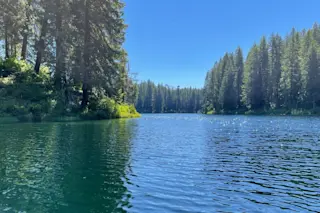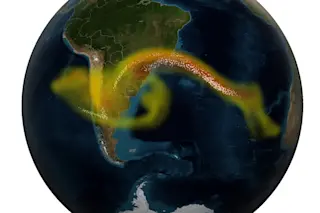Just off the McKenzie Highway in central Oregon lies Clear Lake. This small lake, fed by snowmelt from Mount Washington and nearby springs isn’t an old lake. In fact, ~2,000 years ago the lake didn’t even exist. Instead, the McKenzie River flowed past the spot on its way to join the Willamette River. However, a volcano formed near the McKenzie that threw that path out the window.
The Central Oregon Cascade vistas might be dominated by the big volcanoes like Mount Jefferson and the Three Sisters, but the smaller lava fields like Sand Mountain and Belknap Crater might be as important. These areas of cinder cones and lava flows covered the landscape over the past few thousand years. Most are unlikely to erupt again, but a new volcanic field is more than likely to form in this area in the future.
Sand Mountain in Oregon. Credit: Lee Siebert, Smithsonian Institution.
...














